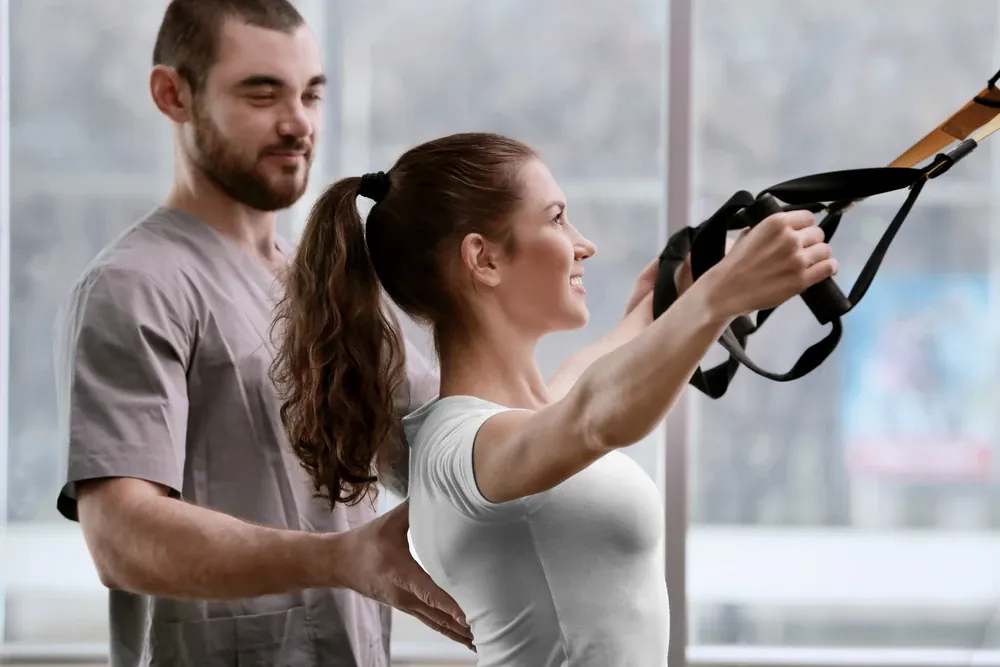Exercise is an essential element for a healthy body and mind. However, some exercises can cause injuries that may be painful and annoying. To protect yourself and enjoy the benefits of physical activity safely, you must follow appropriate prevention measures.
In this article, we'll take a comprehensive look at preventing exercise injuries and keeping your body healthy.
Exercise and causes of injury:
Exercises vary from strength exercises to aerobic exercises and balance exercises, however, all of them may cause potential injuries if not done correctly. Examples of common injuries include muscle tears, bruises, and tendonitis. Exercise injuries result from a variety of factors, Including:
- Excessive exercise: Excessive or excessive exercise is one of the most common causes of injuries.
- Not doing warm-up and stretching exercises: Warming up helps prepare the muscles for exercises, while stretching after exercise helps improve flexibility and reduce the risk of injury.
- Using incorrect technique: If exercise technique is incorrect, it will cause uneven muscle and joint stress, increasing the risk of injury.
- Not wearing appropriate clothing and shoes: Appropriate shoes and clothing can help support muscles and joints and reduce the risk of injury.
- Chronic medical conditions: Some chronic medical conditions, such as arthritis, may increase the risk of injury during exercise.
How to prevent and prevent injuries:
Before doing the exercises:
_ Consult your doctor: Before starting any new exercise program, it is important to consult your doctor to make sure it is safe for you.
_ Start slowly and train gradually: Do not try to do too much at once, and you should not rush into starting a new exercise program. Start with short and not strenuous exercises, then gradually increase the duration and intensity of the exercises over time, to give the body enough time to adapt.
_ Warm-up and stretching: Before starting any exercise, you must do warm-up exercises for a period ranging between 5-10 minutes, such as fast walking or light running, to protect you from the risk of injury when you start training, and after completing the exercise, you must do stretching exercises for a similar period to cool down. Muscles and improve their flexibility.
_ Eat a snack before exercise: Eat a snack that contains an appropriate amount of protein and carbohydrates before exercise to get the necessary energy.
While exercising:
_ Wear appropriate clothes and shoes: Make sure to wear comfortable clothes and shoes suitable for the activity you are practicing. Shoes have an effective and strong role. Make sure that what you wear on your feet is comfortable and designed for the sport you are practicing, and try to change it constantly.
_ Use the correct exercise technique: Make sure you do your exercises correctly to avoid injuries, and if you are not sure how to do an exercise, you can ask a fitness trainer to help you.
_ Listen to your body: Every athlete must learn how to listen to his body and monitor signs of stress or pain. If he feels any unusual tension or pain, you must stop exercising immediately and get some rest.
_ Get enough rest: It is important to give your body enough time to recover and rest between exercise sessions.
_ Drink plenty of water: Drinking plenty of water before, during, and after exercise improves the effect of exercise on your body and health.
_ Diversify your exercise: Do a variety of exercises to avoid boredom and injuries. Do not devote all of your exercise time to intense, high-paced sports such as long-distance running. Try to engage in meditation and flexibility sports to balance your body’s endurance.
After exercising:
- Cool your body: Take some time to cool down your body after the workout.
- Stretch: Always make sure to stretch to improve flexibility and reduce the risk of injury.
- Eat a balanced and healthy meal: Eat a balanced meal full of healthy nutrients after exercise to provide your body with the energy it lost.
Additional Tips:
- Enjoy it: Choose an activity that you enjoy. This is likely to make you commit to exercising if you already enjoy the activity you are doing. Try to find ways to make exercising more enjoyable. You can exercise with a friend or join a sports class.
- Set realistic goals: Set realistic goals that can be achieved through exercise, whether it is losing weight, improving your general health, or increasing your muscle strength. This will help you stay motivated.
- Reward yourself: Reward yourself for achieving your goals. This will help you stay on track.
- Don't give up: Of course, there will be days when you won't want to exercise, but that's okay, just try to get back on track as soon as possible.
- Adequate sleep: Make sure to get enough sleep, as this contributes to restoring and replenishing the body’s energy after strenuous exercises.
- Evaluate performance regularly: Track your progress, and your ability to adapt to exercises, evaluate your performance, and feel free to adjust your training program based on your needs and goals.
- Follow a healthy diet: Nutrition is important in preventing injuries. Please make sure to eat a balanced meal before and after exercise to give you the necessary energy and boost healing.
Adhering to these tips can help achieve the desired results safely and effectively and maintain a healthy body.
Tips for young athletes:
- Focus on fun: Exercising should be a fun experience for children.
- Make it age-appropriate: Make sure to choose activities that are appropriate for the child’s age and abilities.
- Be a good role model: Be a good role model for your child by exercising yourself.
- Make it a family: Exercise with your family as a group activity.
If there is a young athlete in your family, be sure to take him to a physical therapist for children's sports injuries in case he complains of sudden pain that is unusual or not familiar to him.
In case of injuries:
If you are injured while exercising, follow these steps:
- Stop exercising: If you feel pain, stop exercising and rest.
- Apply ice: Apply ice to the affected area for 20 minutes at a time, with 20-minute breaks.
- Wrap the area: Wrap the affected area with a compression bandage.
- Elevate the area: Raise the affected area above the level of the heart.
- Taking pain relievers: You can take over-the-counter pain relievers such as ibuprofen or acetaminophen.
- See a doctor: If symptoms persist, get medical advice.
Note: This is just general advice, and it is always important to consult your doctor or other healthcare professional for advice tailored to your condition.
When should you visit a doctor?
You should go to see a doctor if:
_ If you feel severe and continuous pain or the pain continues for more than several days.
_ In the event of swelling, redness, or bruising of the affected area.
_ Having difficulty moving the affected area.
_If you feel unstable in the affected area.
You can significantly reduce the risk of exercise injuries. For this reason, remember to listen to your body, and do not exercise if you are injured. If you are injured, you must fully recover before returning to exercise again. By preventing and following the necessary procedures, athletes can maintain their safety and enjoy the benefits of physical activity without the fear of injury, exercise injury prevention should be an integral part of any exercise program to ensure continuity and progress in sports safely and healthily.
Remember that enjoying exercise is key to staying healthier and more active. Listen to your body, exercise safely, and enjoy the many health benefits that physical activity provides.
Exercise safely and achieve your goals
 English
English
 العربية
العربية


Add New Comment